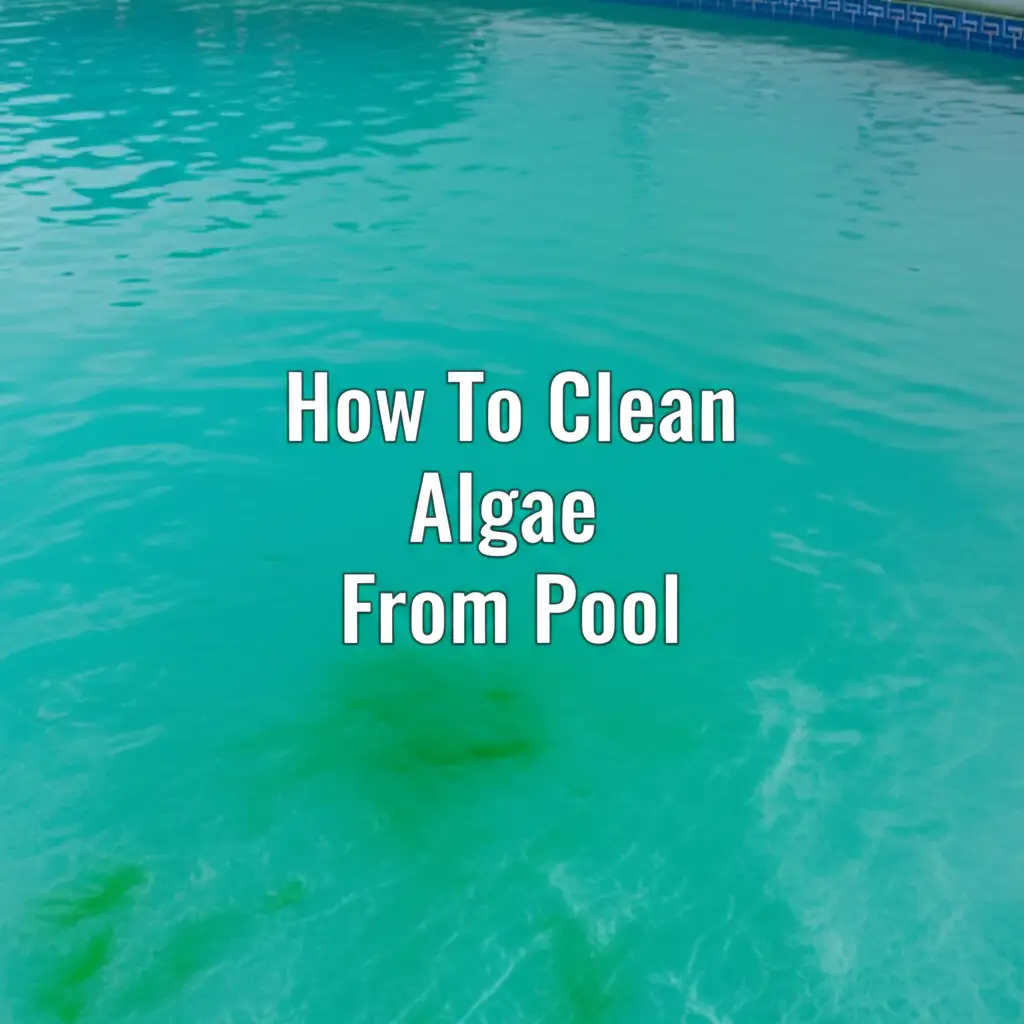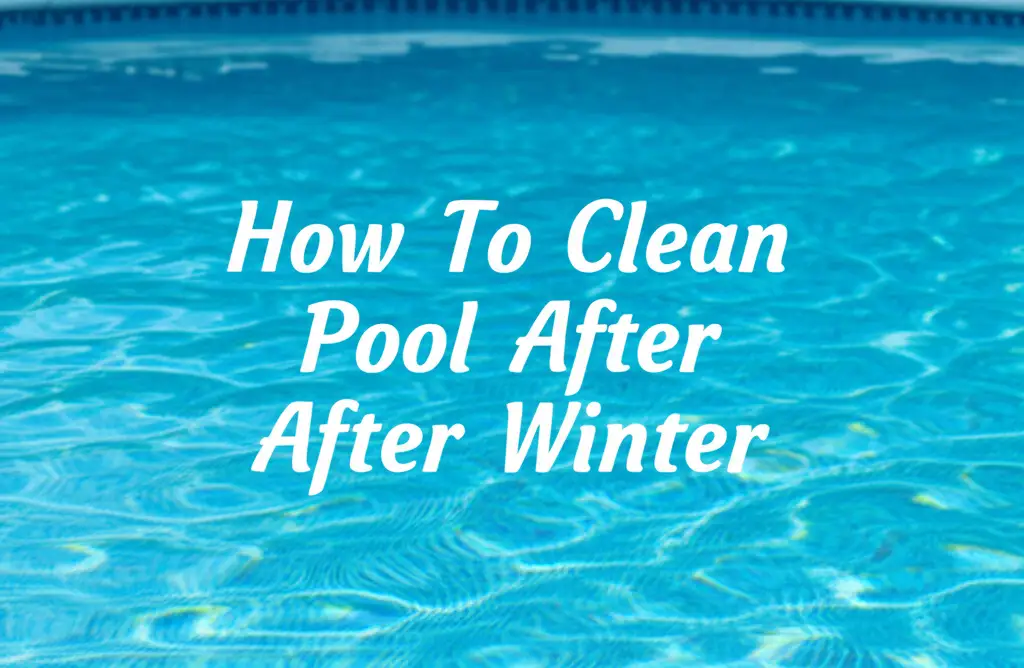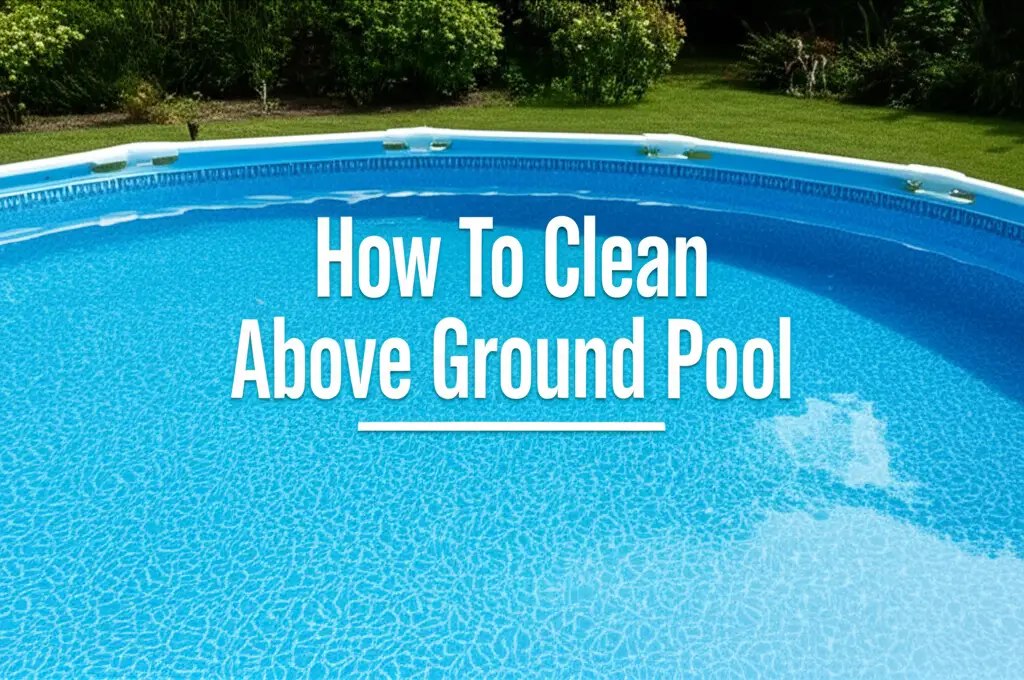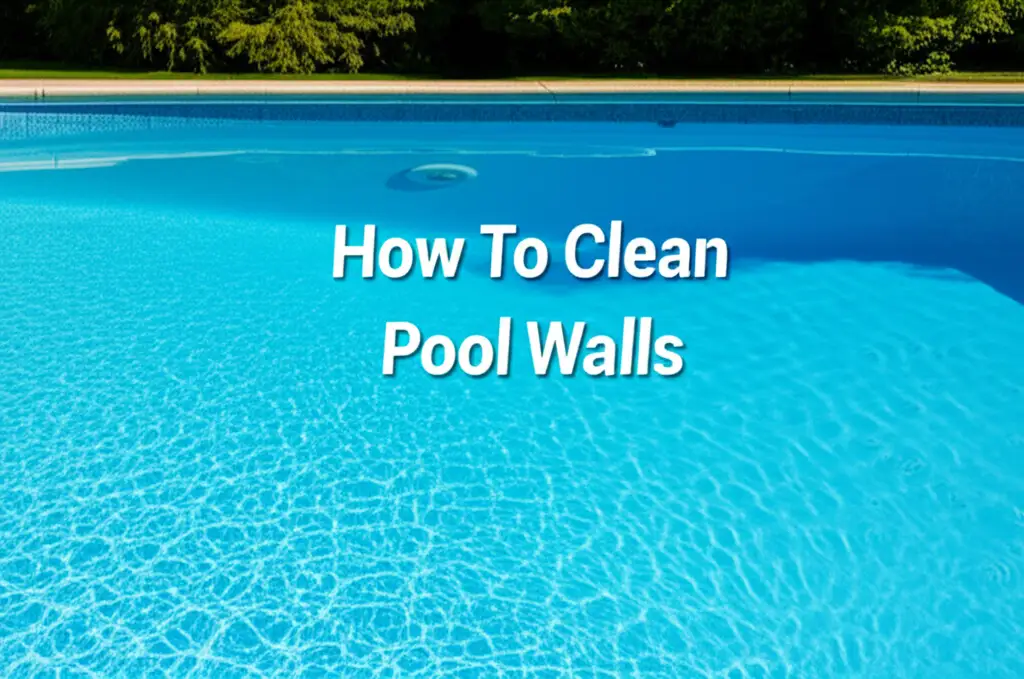· Pool Maintenance · 16 min read
How To Clean Bottom Of Pool Without Draining
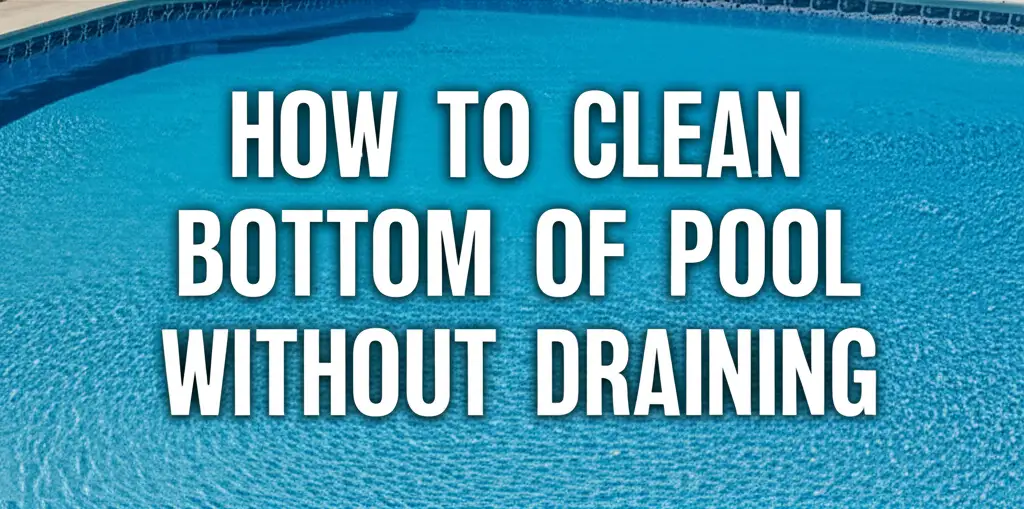
Keep Your Pool Sparkling: How To Clean Bottom Of Pool Without Draining
Do you ever look at your pool and see that murky layer of sediment on the bottom? It can be a real eyesore. Many pool owners wonder if draining the entire pool is the only way to get it clean. I assure you, it is not. You can easily achieve a spotless pool bottom without wasting thousands of gallons of water.
This guide will show you how to clean the bottom of your pool without draining it. We will cover essential tools, manual vacuuming techniques, automated solutions, and how to manage stubborn issues like algae. By the end, you will have all the knowledge to keep your pool pristine with less effort. Let’s make your pool a sparkling oasis once more.
Takeaway
- Use manual vacuums or robotic cleaners to remove debris.
- Brush pool surfaces regularly to dislodge settled particles.
- Maintain proper water chemistry to prevent algae and cloudy water.
- Ensure your pool filter system works well for clear water.
A Simple Answer to a Common Question
You can clean the bottom of your pool effectively without draining it. This process involves using specialized tools like pool vacuums, brushes, and nets to remove settled debris and algae. Regular cleaning and proper water chemistry are key to keeping the pool floor spotless.
Understanding Pool Sediment and Why It Matters
When you step into your pool, you want clean, clear water. Often, dirt, leaves, and other small particles settle at the bottom. This buildup is called pool sediment. Over time, it can make your pool look dirty and uninviting.
Sediment is not just an aesthetic problem. It can also create an environment for algae to grow. Algae makes the water cloudy and can even stain your pool surfaces. A dirty pool bottom also means more work for your filter, which can reduce its lifespan. Cleaning the bottom regularly keeps your pool healthy and looking its best.
This sediment comes from many sources. Wind blows in dust and pollen. Swimmers bring in dirt from their feet or swimwear. Even rain can wash pollutants into your pool. Gravity pulls these particles down, where they accumulate on the pool floor. Learning how to clean the bottom of pool without draining is a skill every pool owner needs.
Essential Tools for Cleaning Your Pool Bottom
Cleaning the bottom of your pool needs the right tools. You have a few options, from simple manual tools to advanced automated cleaners. Knowing what each tool does helps you choose the best fit for your pool’s needs and your budget. I use a combination of these for the best results.
Manual Cleaning Tools
- Pool Brush: This tool helps scrub algae and dirt off the pool surfaces, including the bottom. Attach it to a telescopic pole. You can easily reach all areas of your pool. Brushing dislodges grime so your filter can catch it, or you can vacuum it away.
- Leaf Net/Skimmer: A large, flat net on a pole. Use it to scoop up leaves, bugs, and large debris from the surface and shallow bottom. Removing bigger items first makes vacuuming easier. This prevents clogs in your vacuum or filter system.
- Manual Pool Vacuum: This is a key tool for deep cleaning. It connects to your pool’s filtration system or a garden hose. A vacuum head moves along the bottom, sucking up dirt and debris. This method gives you direct control over the cleaning process.
Automated Cleaning Solutions
- Robotic Pool Cleaners: These are smart devices that move independently. They have their own filter system and collect debris in an internal basket. You just drop them in, and they do the work. Robotic cleaners are great for regular maintenance and can save you a lot of time.
- Suction-Side Pool Cleaners: These cleaners connect to your pool’s skimmer line. They use the pool pump’s suction to move around and pick up debris. They are less expensive than robotic cleaners but rely on your pool pump’s power. They are effective for daily dirt.
- Pressure-Side Pool Cleaners: These cleaners connect to a dedicated return line. They use the water pressure from your booster pump to move and collect debris. They often have a debris bag to catch large items. These cleaners are good for pools with heavy leaf loads.
Having the right tools makes the job of how to clean bottom of pool without draining much easier. Consider what type of debris you usually have and how much time you want to spend cleaning.
Mastering Manual Pool Vacuuming
Manual vacuuming is a hands-on way to clean your pool bottom. It gives you direct control and ensures a thorough clean. I find this method very effective for specific problem areas or heavy sediment. Let me walk you through the steps.
Preparing for Vacuuming
First, gather your equipment. You will need a telescopic pole, a vacuum head, a vacuum hose, and a leaf skimmer. Make sure your filter is clean and ready to work hard. If your filter is dirty, it will not be able to capture all the debris. You can learn how to clean a sand filter for an above-ground pool to prepare for this.
Next, connect the vacuum head to the telescopic pole. Then, attach the vacuum hose to the vacuum head. Now, submerge the vacuum head and hose into the water. This step is important to remove all the air from the hose. Air in the hose reduces suction and makes vacuuming inefficient. You will see bubbles coming out of the vacuum head as the hose fills with water.
Once the hose is full of water, connect the open end to your pool’s skimmer or a dedicated vacuum port. Turn on your pool pump. Make sure your filter is set to “filter” or “waste” if you are dealing with a lot of fine sediment or algae. Setting it to “waste” bypasses the filter, sending debris directly out. This prevents clogging your filter but also lowers your water level.
The Vacuuming Process
Begin vacuuming slowly. Move the vacuum head in long, overlapping strokes across the pool bottom. Think of it like mowing a lawn. Slow movements prevent stirring up the sediment, which would make the water cloudy. If the water becomes too cloudy, stop and let the particles settle for a few hours. Then you can continue.
Pay special attention to corners and edges. These areas often collect the most debris. If you encounter large piles of leaves, use your leaf skimmer first. Vacuuming heavy debris can clog your hose or pump. Regularly check your pump’s skimmer basket and empty it as needed.
After vacuuming, check your water clarity. You may need to brush the pool walls and floor again to dislodge any remaining particles. Then, run your filter system for several hours. This helps clear any suspended particles. Manual vacuuming is a fundamental skill for how to clean bottom of pool without draining.
Automated Solutions: Robotic and Suction Pool Cleaners
If you prefer less manual labor, automated pool cleaners are a fantastic option. They save you time and effort. I often let my robotic cleaner do the daily work, and it keeps the pool surprisingly clean. These devices do a great job of keeping the bottom clear.
Robotic Pool Cleaners
Robotic pool cleaners are independent machines. They have their own motors and internal filtration systems. You simply place them in the water, and they navigate the pool on their own. They use smart technology to map your pool’s layout. This ensures complete coverage of the bottom and sometimes even the walls.
These cleaners collect debris in an onboard filter basket. After a cleaning cycle, you just remove the cleaner and empty the basket. This makes cleanup easy. They are energy-efficient because they do not use your main pool pump. This can save you money on electricity. Robotic cleaners are a premium choice for consistent, effortless cleaning.
Suction-Side Pool Cleaners
Suction-side cleaners connect to your pool’s skimmer line. They use the suction power from your existing pool pump to move around. As they move, they draw water and debris into your pool’s filtration system. They are simpler in design than robotic cleaners. This often makes them more affordable.
These cleaners work well for daily dust and small debris. They are less effective for very large leaves or heavy sediment. Since they use your main pool pump, they add to your pump’s energy consumption. Ensure your pool pump is powerful enough to run the cleaner effectively. A healthy pump impeller is crucial for good suction. You can learn how to clean an above-ground pool pump impeller to maintain efficiency.
Automated cleaners are a great way to keep your pool bottom clean with minimal effort. They are a smart investment for anyone looking to simplify their pool maintenance routine. They directly address how to clean bottom of pool without draining on a regular basis.
Tackling Stubborn Algae and Debris
Sometimes, your pool bottom has more than just dirt. Algae, especially, can cling stubbornly to surfaces. Getting rid of it needs a more focused approach. I have dealt with green, black, and mustard algae, and each one needs a specific battle plan.
Dealing with Algae Growth
If you see green, black, or mustard-colored patches on your pool bottom, you have algae. The first step is to brush the affected areas thoroughly. Use a stiff pool brush to scrub the algae off the pool surface. This breaks up the algae and makes it easier for chemicals to kill it. It also allows your filter to capture more of it.
After brushing, shock your pool. Pool shocking means adding a large dose of chlorine or non-chlorine shock to the water. This powerful treatment kills algae and other contaminants. Follow the product instructions carefully. You might need to add a specialized algaecide if the problem is severe or if you have specific types like black algae. For extensive algae problems, especially in above-ground pools, additional steps are often needed. You can find more detailed guidance on how to clean an above-ground pool with algae.
Run your pool filter continuously for 24-48 hours after shocking. This helps circulate the chemicals and filters out the dead algae. You may need to backwash or clean your filter frequently during this time. Dead algae can make your water cloudy. A clarifier can help gather small particles into larger ones for easier filtration.
Removing Fine Sediment and Silt
Even after vacuuming, fine particles or silt can remain. These tiny bits are too small for your filter to catch easily. First, make sure your filter is working at its best. Sometimes, a dirty filter lets these particles pass right through.
For very fine sediment, a flocculant or clarifier can help. A flocculant makes tiny particles clump together into larger, heavier masses. These larger clumps then settle to the bottom. Once settled, you can vacuum them to waste. This method requires careful monitoring of your water level since you are expelling water.
A clarifier also makes small particles clump, but they remain suspended. Your filter can then capture these larger clumps more effectively. Always follow the product directions for flocculants and clarifiers. These products help clear cloudy water, making the bottom visible and easier to clean. Effectively managing algae and fine debris is key to how to clean bottom of pool without draining and maintain crystal-clear water.
Maintaining Pool Chemistry and Filtration for a Clean Bottom
A truly clean pool bottom is not just about scrubbing and vacuuming. It also depends heavily on your pool’s water chemistry and filtration system. These two elements work together to prevent debris from settling and keep your water sparkling. I always emphasize balance and efficiency here.
The Role of Water Chemistry
Proper water chemistry helps prevent algae growth and keeps your water clear. Balanced pH levels are crucial. If the pH is too high or too low, chlorine becomes less effective. This can lead to algae blooms and cloudy water, allowing more sediment to form. Aim for a pH between 7.4 and 7.6.
Chlorine levels must also be consistent. Chlorine sanitizes the water, killing bacteria and algae. Without enough chlorine, organic matter breaks down and settles to the bottom. Test your chlorine levels regularly and add more as needed. Alkalinity and calcium hardness also play roles in overall water balance. Balanced water prevents scaling and corrosion, which can also contribute to unwanted particles in the water.
Filtration System Efficiency
Your pool’s filter is its heart. It constantly removes suspended particles from the water. If your filter is dirty or not working properly, debris will not be removed. It will simply settle to the bottom. Regular filter cleaning is essential. For sand filters, this means backwashing. For cartridge filters, it means removing and rinsing the cartridges. For DE filters, it means backwashing and recharging with new DE powder. You can find detailed instructions on how to clean a sand filter for an above-ground pool to ensure yours is running well.
Your pool pump also plays a vital role. It circulates the water through the filter. Ensure your pump runs long enough each day to turn over all the water in your pool at least once. This usually means 8-12 hours, depending on your pump and pool size. Good circulation prevents dead spots where debris can accumulate. A clean pump impeller also ensures maximum flow and efficiency. You can learn how to clean an above-ground pool pump impeller to keep your system performing at its best.
By keeping your water chemistry balanced and your filtration system running efficiently, you dramatically reduce the amount of work needed to clean your pool bottom. This proactive approach is key to maintaining a clear pool without draining.
Preventive Measures for a Spotless Pool Bottom
Prevention is always easier than cure when it comes to pool maintenance. Taking a few simple steps regularly can drastically reduce the amount of debris that settles on your pool bottom. I have found that a little effort upfront saves a lot of work later.
Regular Skimming and Brushing
Daily skimming is your first line of defense. Use a leaf net to remove leaves, bugs, and other floating debris from the pool surface. If these items sink, they become much harder to remove. Skimming prevents them from settling to the bottom. Make this a quick routine each day, especially if you have trees nearby.
Brushing your pool walls and floor at least once a week helps a lot. Even if you cannot see visible dirt, tiny particles cling to the surfaces. Brushing dislodges these particles. Once dislodged, your filter can catch them. This prevents them from accumulating and becoming stubborn stains or algae spots. Pay extra attention to dead spots in your pool where circulation is poor.
Pool Covers and Enclosures
A pool cover is an excellent way to keep debris out. When your pool is not in use, cover it completely. This prevents leaves, dust, and other contaminants from entering the water. There are different types of covers, including solar covers, safety covers, and winter covers. Each offers different benefits. Even a simple solar cover can significantly reduce the amount of dirt entering your pool.
If you have a pool screen enclosure, it helps a lot. It keeps out a lot of bugs and larger debris. However, tiny particles can still get through. You might still need to skim and brush. Cleaning the screen enclosure itself can also impact pool cleanliness. Knowing how to clean algae from a pool screen enclosure ensures less debris enters your water.
Routine Filter Backwashing/Cleaning
Your filter is key to clear water. Make sure to backwash or clean your filter regularly. How often depends on your filter type and how much use your pool gets. A dirty filter cannot remove particles effectively. If particles are not removed, they will eventually settle on the bottom. Keep an eye on your filter pressure gauge. An increase in pressure often means it is time to clean your filter.
By implementing these preventive measures, you will find you spend much less time actively cleaning the bottom of your pool. This proactive approach is central to how to clean bottom of pool without draining efficiently and effectively.
FAQ Section
Can I use a regular shop vac to clean my pool bottom?
No, you should not use a regular shop vac for pool cleaning. Shop vacs are not designed for wet applications involving large volumes of water and may get damaged. They also lack the filtration needed for pool water. Using an improper vacuum can be unsafe and ineffective. Stick to pool-specific vacuum cleaners designed for underwater use.
How often should I clean the bottom of my pool?
The frequency depends on several factors. These include how often you use your pool, nearby foliage, and weather conditions. Generally, manual vacuuming should occur once a week. Robotic cleaners can run daily or every other day. Regular brushing and skimming should be done daily to prevent buildup.
What causes a dusty layer on the pool bottom after cleaning?
A dusty layer often means very fine particles are settling. Your filter might not be fine enough to catch them. Check your filter and clean it thoroughly. Consider using a clarifier or flocculant to clump these small particles. Then, vacuum the settled debris to waste.
Is it normal for my pool to lose water when vacuuming to waste?
Yes, it is normal to lose water when vacuuming to waste. This method bypasses your filter and expels water along with the debris. It is effective for heavy dirt or algae. However, you will need to add fresh water to replenish the lost volume. Monitor your water level closely.
How long should I run my pool pump daily to keep the bottom clean?
Run your pool pump long enough to turn over all the water in your pool at least once per day. For most residential pools, this means running the pump for 8-12 hours daily. Longer run times help keep water circulated and filtered. This prevents debris from settling and keeps the bottom clear.
Can a dirty pool filter cause a dirty pool bottom?
Absolutely, a dirty pool filter is a primary cause of a dirty pool bottom. If your filter is clogged or inefficient, it cannot properly remove suspended particles. These particles will then settle out of the water and accumulate on the bottom. Regularly clean your filter for effective debris removal.
Conclusion
Keeping your pool bottom spotless does not require draining your pool. By using the right tools and techniques, you can effectively remove dirt, debris, and even stubborn algae. We explored manual vacuuming, the benefits of automated cleaners, and specific strategies for tough cleanups. Proper water chemistry and a well-maintained filtration system are also key players in preventing future buildup.
I believe that consistent, proactive maintenance makes pool care much easier. Embrace regular skimming, brushing, and using your chosen vacuum method. By following these steps, you will enjoy a consistently clean and inviting pool without the hassle of draining. Take action today and keep your pool sparkling clear! Your pool will thank you for the consistent care.
- Pool Cleaning
- Pool Maintenance
- Pool Vacuum
- Algae Removal
- Water Clarity

